Here’s a look at four times history was made on November 9th – not always by coincidence.
1918: The last emperor
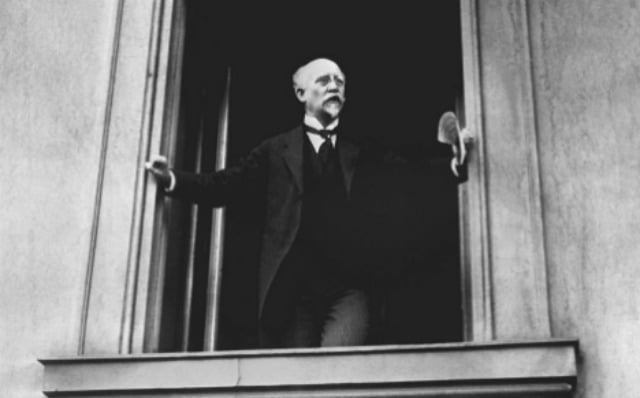
A staged photograph of Philipp Scheidemann leaning out of a window of the Reichstag. Photo: DPA
With Germany on the brink of defeat in World War I and a revolutionary mood sweeping the country, the unpopular emperor Kaiser Wilhelm II was forced to abdicate, ending Germany’s monarchy.
Word spread that the Communists, led by Karl Liebknecht, would soon pronounce a communist republic. To prevent this, on November 9th, 1918, the deputy chairman of the Social Democrats, Philipp Scheidemann rushed to the balcony of Berlin’s Reichstag parliament to announce the birth of what would become the Weimar Republic.
“Long live the German republic!” he shouted.
But a few hours later, Liebknecht also declared the birth of the ‘free socialist German republic’. Germany was in a state of instability and strife.
Two days later, Germany agreed to sign an armistice that ended the Great War against the Allied forces.
Eventually, the government relocated to Weimar in January 1919, where it was able to establish a parliamentary democracy. But serious problems and unrest still plagued the country.
The terms of Germany’s surrender were deemed so humiliating that historians believe they helped sow the seeds for World War II.
It became the basis of the Dolchstoßegende, or the “stab-in-the-back-myth”. Right-wing circles asserted the belief that the German forces had not actually lost the war, but that the country had been betrayed, or stabbed in the back, by civilians at home.
They wanted to blame the so-called “November Criminals”, the politicians involved in the armistice and the November Revolution.
In the following decades, the Dolchstoßlegende and the myth of the November Criminals became a core component of right-wing rhetoric.
1923: Hitler’s ‘beer hall’ putsch
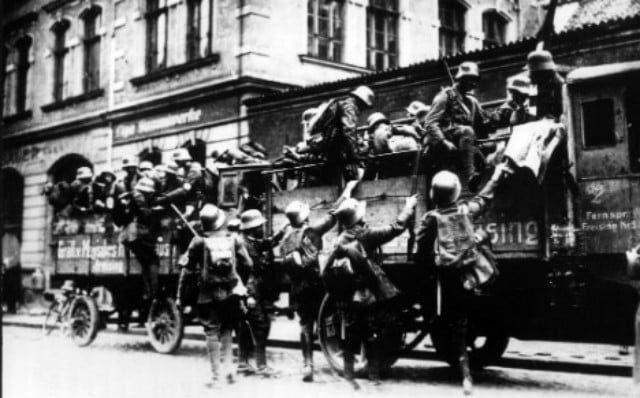
SA paramilitary troops prepare for the Putsch in Munich on November 9th 1923. Photo: DPA
Adolf Hitler, the then relatively unknown Nazi Party leader, and his cronies tried to seize power with a coup that started in a crowded Munich beer hall on November 9th, 1923.
After climbing onto a chair and firing into the ceiling, Hitler proclaimed the end of “the government of the November criminals”, a term used by critics of the 1918 surrender.
But police and soldiers quickly crushed the attempted putsch, and Hitler was arrested.
He used his trial to gain notoriety and spread anti-Jewish hatred. He often went off track during questioning to rant about issues of race and economics. Sympathetic conservative judges at his trial did not try to prevent his polemic, and Hitler capitalized on this. Ultimately he spent barely nine months in prison.
It was in his cell that Hitler began writing “Mein Kampf”.
His experience of this episode also altered his view about affecting change in Germany: before he had relied on violence as his primary means of getting things done, but now looked to strictly legal means to win over the sympathies of the German people and gain power.
Within a decade of the Beer Hall Putsch, Hitler was Chancellor of Germany.
1938: Night of Broken Glass

A Jewish shop in Magdeburg on the morning after the progrom. Photo: Bundesarchiv / Wikimedia Commons
Nazi thugs torched synagogues, smashed Jewish-owned shops and rounded up Jewish men across Germany on November 9th, 1938, in what became known as “Kristallnacht” or the “Night of Broken Glass”.
The timing was no coincidence – that evening senior Nazi figures like Joseph Goebbels had riled up crowds at events honouring Hitler’s 1923 coup bid.
At least 90 Jews were killed and 30,000 deported to concentration camps in the outbreak of violence, which historians say ushered in the start of the Nazis’ drive to wipe out Jews.
Today, Germans remember the Kristallnacht pogrom by polishing or placing flowers on “Stolpersteine”, small brass plaques on cobblestones commemorating Nazi victims.
READ ALSO: What I’ve learned from living in the country my family once fled
1989: Berlin Wall comes down
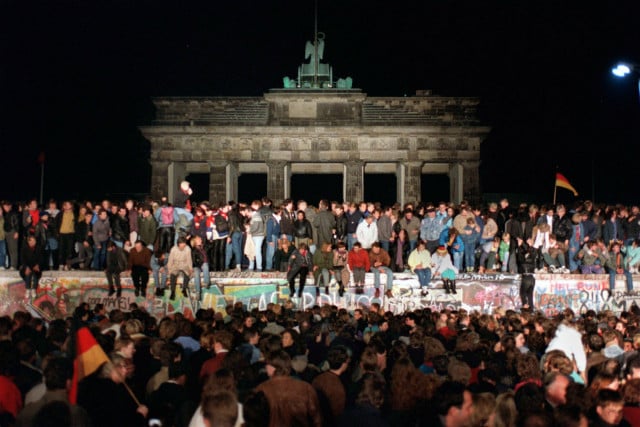
After the Berlin Wall fell in 1989. Photo: DPA
The fall of the Berlin Wall in a bloodless revolution on November 9th, 1989 is a joyous milestone in German history, ending 28 years of Cold War separation.
But because of the dark chapters associated with the date in the past, it was considered an ill choice for a public holiday. Germans instead celebrate October 3rd, 1990, the official reunification of East and West Germany.
READ MORE: Talkin’ bout my generation – What unity means to eastern Germans
The wall came down almost by accident, after communist East German bureaucrat Guenter Schabowski was caught off guard during a live press conference on the question of when exactly new, more relaxed travel rights
would take effect.
“As far as I know… as of now,” he improvised, sending thousands of East Berliners streaming towards checkpoints where baffled guards eventually opened the barriers.
READ MORE: How and why was the Berlin wall built?
With additional reporting by Lucy Proudman

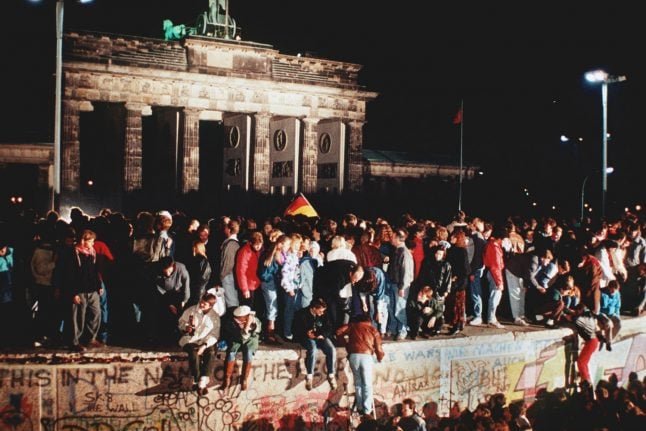

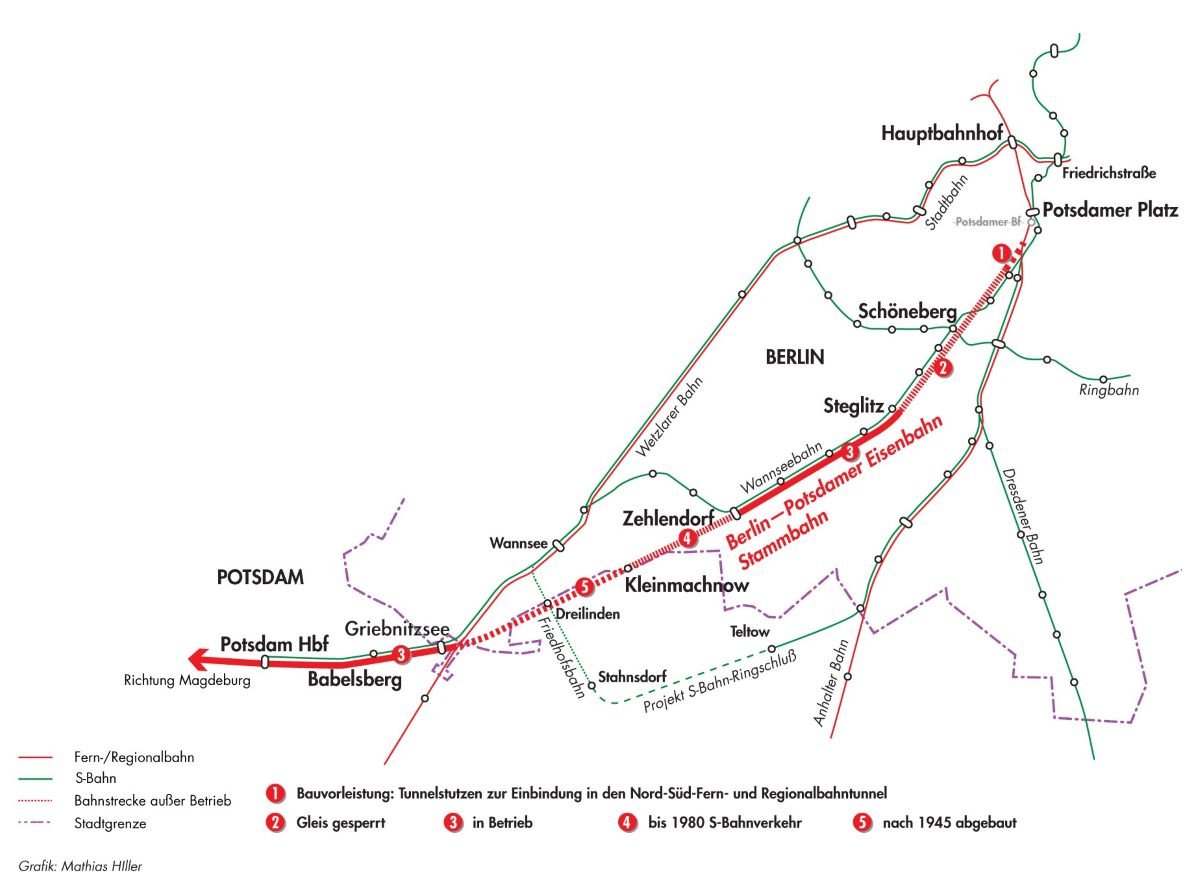
 Please whitelist us to continue reading.
Please whitelist us to continue reading.
Member comments